- Call us: 01444 237070
- Contact Us
- Stores
- Sign In / Register
-
- Back
- Used Cameras
- Used Accessories
- Used Lenses
- Used Video
- Used Film Equipment
- Used Stock Alert
- Used Blank Test
- Sell or Part Exchange
- Used Clearance
- Recently Added Used Equipment
- Park Picks
- All Used Black Friday Deals
- Faulty
- Trade-In
- Blog
- New in
- Call us
- Contact us
- Stores
- Sign in
- Categories
- Tips & Inspiration
- Reviews
- News
- Events
- Features
- Buying Guides
- Competitions
The Rise of AI in Photography
Photographers have been drawn towards innovation from the outset. Beautifully, the medium combines the best of our creative and technological minds into one of humanity’s most celebrated forms of self-expression.
In 2024, photography stands in the face of an influential force. Artificial intelligence has shown its strengths in almost all facets of our professional and personal lives, becoming arguably the most significant growing technology of the 21st century. However, it’s not been without a fiery debate for and against its acceleration.
In this photography feature, we’ll be taking a deep dive into the past, present and future of artificial intelligence in photography, looking at the good, the bad, the ugly, and everything in between so you can decide on which side of the debate you stand.
We’ll do our best to present an even-handed discussion, so you can come to your own conclusion and walk away with the awareness needed to ensure AI remains a photographic force for good!
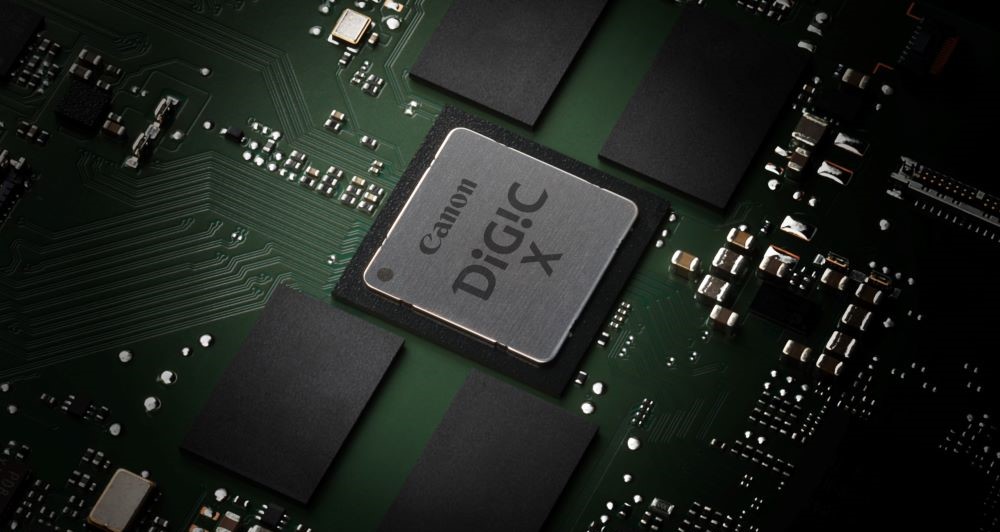
AI, explained
The more artificial intelligence is discussed today, the vaguer its public perception becomes. It’s an increasingly normalised, commercialised tool; that’s definition is changing beyond what the average user can keep up with.
At its core, artificial intelligence is a field of research which allows machines to perceive the environment around them, and learn from it to find the best way of achieving a certain goal. By giving machines this power of perception, we branch out into a new world where computers no longer struggle with tasks that require human intelligence to carry out.
It’s this idea of performing intelligent, human tasks that makes AI so powerful. It pushes the limits of what computers have historically been able to achieve, allowing them to solve complex problems and carry out processes at the same level as (or better than!) humans can.
As AI becomes more intertwined in our daily lives, we tend to forget how prominent it truly is as the maximum level of ‘intelligence’ we can provide is constantly growing. For decades now, it’s been driving our digital, financial and social lives through search engines, social media algorithms, data-driven decision-making and even more.
It appears that AI’s latest great frontier surrounds generative and creative tools. While AI continues to grow elsewhere, no topic is as universally discussed, especially in photography. From excitement over new, brilliant tools to fears of technological redundancy, the world of photography has been somewhat rocked by this new force.
AI Features in Post-Production
AI’s first real entry into the world of photography was to streamline photographers’ post-production duties. Akin to systems like spell-checkers and voice assistants, AI photography editing tools have become so entrenched in our routine that we can often forget that they use AI as the term evolves. Nevertheless, they’re a great example of how far AI has already come and established itself in our lives.
AI editing tools have been flourishing recently. Any photographer established in the Photoshop / Lightroom Classic ecosystem will know how much easier they make their job – object selection and masking; denoising and enhancing; Generative Fill and Expand; Lens Blur and even more are all intuitive upgrades that complement our art perfectly. These tools feel truly brilliant to use, and keep Adobe programs the most popular.
Generative Fill and Expand are perhaps the most involved display of AI in mainstream post-production to date. There’s been so much discussion about these tools since their beta release – being able to provide short prompts and letting Photoshop (or even Lightroom Classic as of its newest update) add or remove content as you please is an immense power to have.

This photo has had three distracting elements removed – you’d have no clue they were there without seeing the unedited image!
It’s even approaching a point where some ‘unforgivable’ compositional mistakes in photography are starting to become salvageable. If you’ve got distracting objects in your shot or you haven’t given yourself quite enough room, you can almost get away with it now by removing elements and expanding using AI. While purists will disagree, of course, and you’ll be tempted to avoid having to do this, having that option there is a joy.
Adobe isn’t alone. Capture One includes AI tools that are ultra-specific to photographers, with consistent cropping, smart bulk adjustments and even Auto Dust Removal for those annoying spots on your lens!
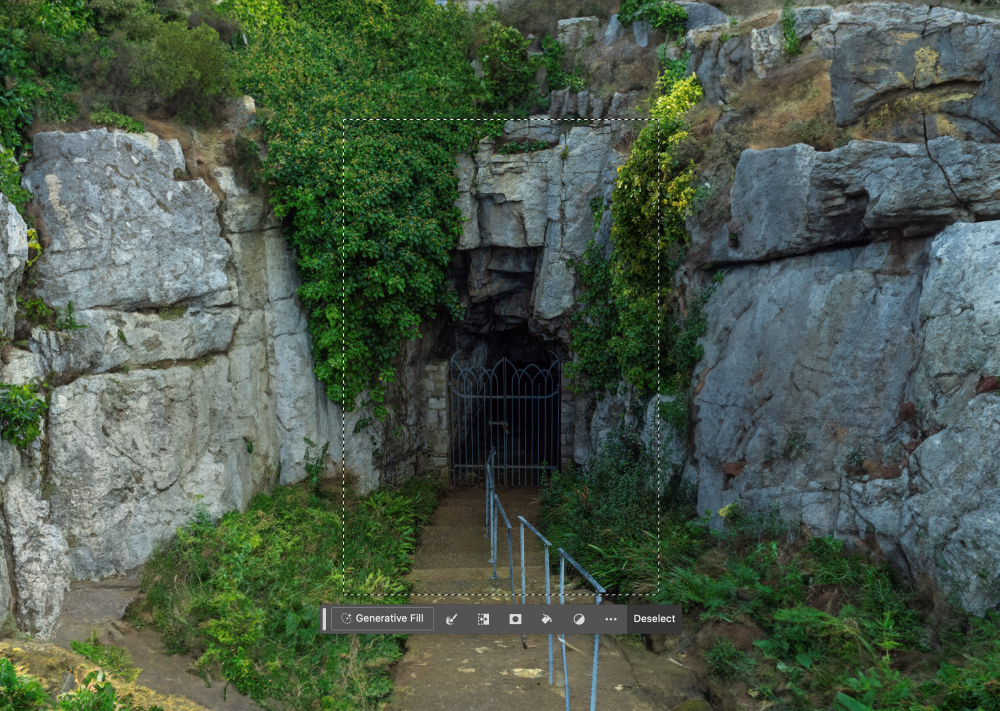
Here, the shot has been expanded out from the highlighted boundary using Photoshop Generative Fill. You have to look pretty hard to notice the flaws in the algorithm’s output.
Deep Learning in Photography
The rise of mirrorless cameras has inspired a flurry of innovation to match what they bring to the photography world. It's surprising how much modern digital cameras use AI and machine learning. Much like the responsiveness and usability of a digital camera, artificial intelligence firmware is changing the game and making both enthusiasts' and professionals’ jobs that much easier.
Many of these systems employ deep learning systems, an intensive form of machine learning. Unlike experimental AI models like ChatGPT which are constantly improving, deep learning systems are released having already been taught how to operate. This results in reliable, intelligent processing that drives a lot of new, complicated processes in a camera.
Artificial intelligence enables brilliant AI camera tools like Face and Eye Detection, and further subject detection. These systems are trained on deep learning technology, which emulates the decisions that humans can make easily – namely, recognising subjects. The more thought you give it, instructing a computer to recognise a bird, for instance, requires some serious computation!
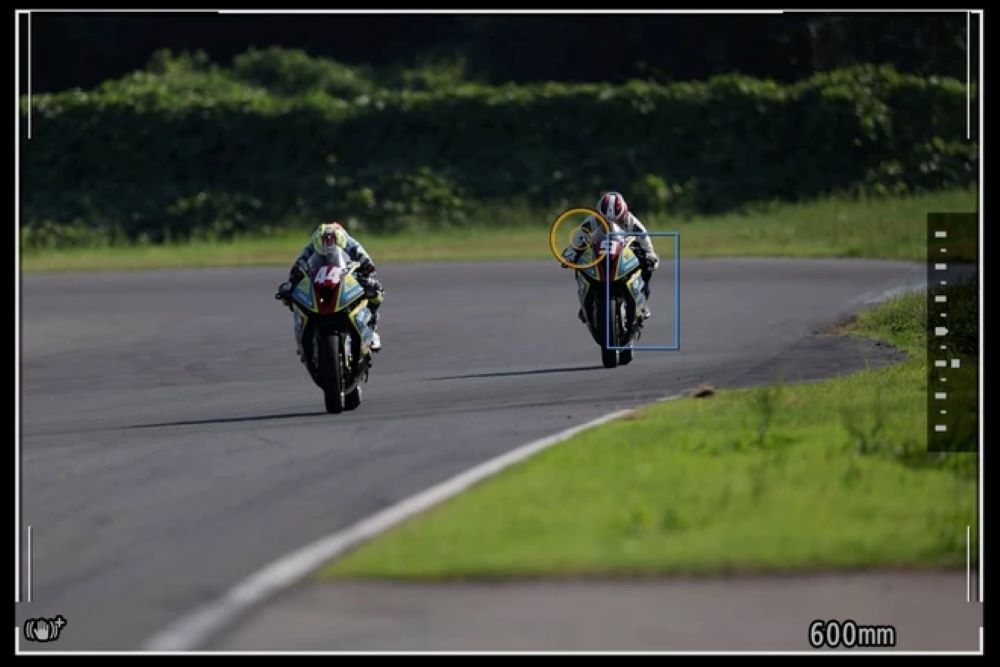
Autofocus has seen a boom in performance due to the rise of artificial intelligence and deep learning. Every Sony camera since the Sony A7R V in late 2022 has an AI Processing Unit. Canon’s mirrorless cameras (and even the DSLR EOS-1D X Mark III), and the Nikon Z8 and Z9, adopt the term Deep-Learning AF. All the top-performing full-frame mirrorless cameras have adopted AI in a ground-breaking way, even to improve other aspects such as image and video quality.
The intuition behind deep learning algorithms is becoming more and more innovative by the minute. Canon’s newest pair of cameras, the EOS R1 and EOS R5 Mark II, both build around Dual Pixel Intelligent AF. For instance, their subject detection modes can now continue tracking subjects as they pass behind obstacles. People Priority mode effectively pinpoints the key people in your scene, which event photographers for instance are likely to rely on massively. Beyond autofocus, new tools like In-Camera Upscaling increase the size of your image up to an eye-watering 180MP.
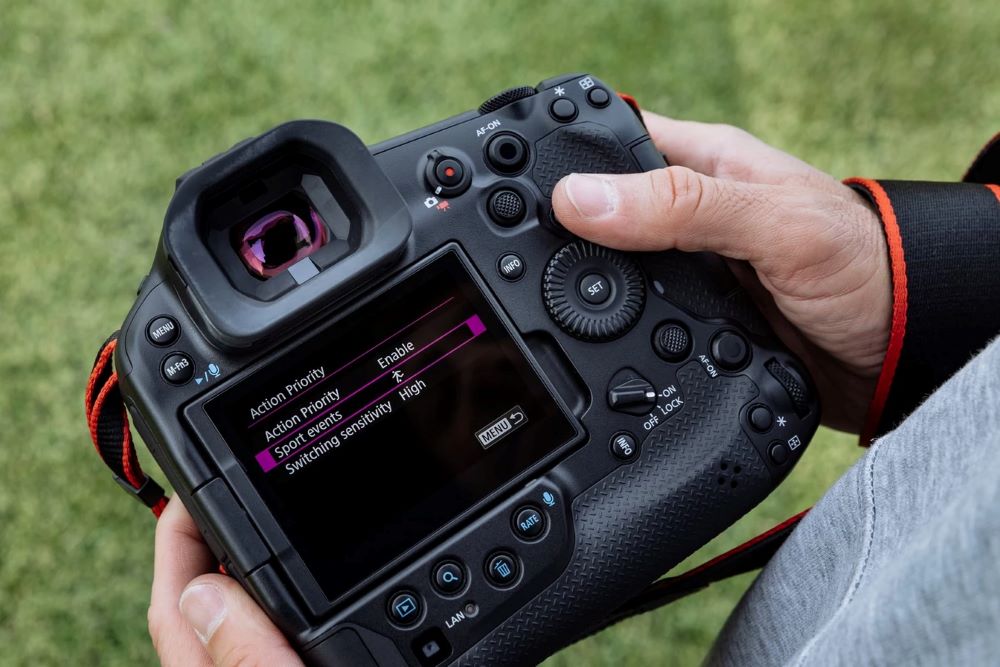
Even more outrageously, Canon’s new Action Priority Mode is tailored towards shooting football, basketball and hockey, and can identify the player(s) who are most likely to be involved in the action. On release, this has been shown to work spectacularly well, and this goes to show how specialised and reliable machine learning is becoming in photography.
By having learnt from its environment, an autofocus system can become much more reliable and faster, too. Cameras now enable a huge range of subject detection modes for vehicles, animals, people and even more. Autofocus hit rate now is incredible across the board, even in low light, all thanks to a complete rethinking with AI at the forefront.
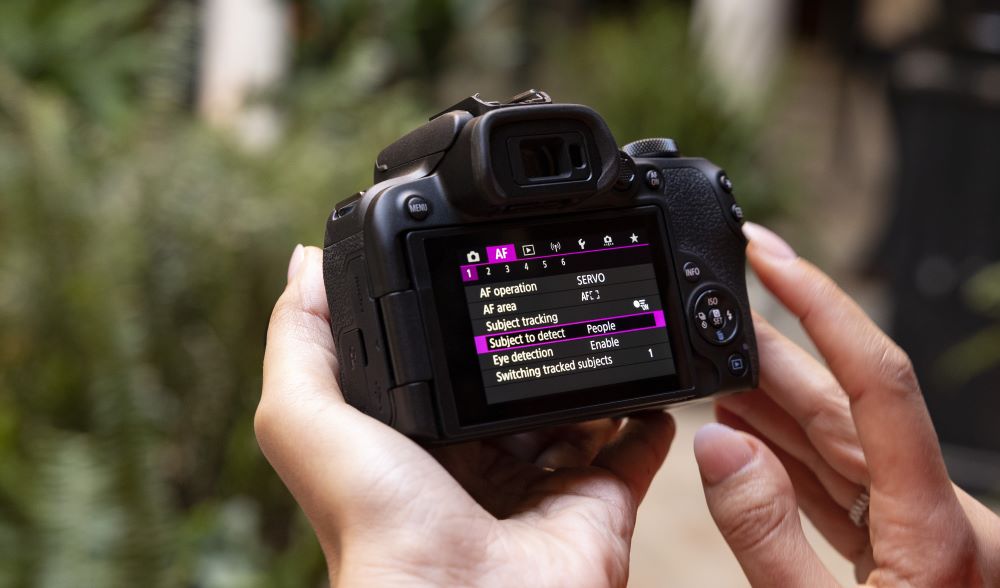
What is Generative AI?
Generative AI is one of the fiercest talking points in technology and photography discourse. Its potential use across seemingly all industries is staggering. It marks a departure from previous AI usage in photography - quality-of-life upgrades to a modern photographer’s usual activity.
When AI involves photography, it usually centres around two main goals:
- To help with producing and editing photos
- To generate the photos themselves
The latter is the application of AI that, by far, inspires the most debate.
A generative AI model must be trained on humongous data sets of images to learn the patterns, structure and features of a genuine image. It then generates a new image containing similar characteristics and repeats, getting closer to the desired output each time. This happens 24/7, and the models used are only getting more realistic – so much so that it’s hard to keep up!
Perhaps the main selling point of these systems is that they require virtually zero know-how from the user. They’re able to process natural language prompts to produce extraordinary results regardless of what you enter. While their proponents will argue these prompts can be rather involved, producing high-quality images requires simply a few words.
Watching AI models produce art (and thus, photos) of an ever-higher quality, we also watch them make their way into everyday media. One of the most inviting aspects of generative AI is how accessible it’s becoming – major models like Stable Diffusion, DALL-E and Midjourney are all free to access. This makes it hugely enticing to consumers and, more importantly, businesses looking for fast, professional graphics at no expense.
The growing easy use of generative AI is where fears of technological redundancy begin to spring up. Depending on how you see it, this is either an overreaction to change or a genuine worry. Of course, we’ve seen very little change in the life of the standard photographer just yet. However, it’s hard to resist speculation in our changing world, especially given the impact generative AI is already having on the graphic design industry – it’s difficult not to worry if photography is next in the firing line.
Generative AI Controversies
The rise of Generative AI has been hugely controversial, making it pervasive in tech and art debates. Legal and ethical concerns have seemed to earmark its rise, and it is here where we start to wonder if artificial intelligence is moving too fast for us to keep up.
As difficult as it is to admit, it’s becoming a challenge to differentiate between real photos and AI-generated images. This wasn’t the case at all a couple of years ago – it seemed as if visual art using artificial intelligence was merely an experiment, and wasn’t acceptable for mainstream use. However, if this decade’s shown us anything so far, it’s that nothing in AI stays still for too long.
The first big incident of AI-generated images passing as genuine photographic works occurred at the 2023 Sony World Photography Awards. The winner in the Open Creative category submitted an AI-generated work in protest and won, making world headlines and a huge statement about the staying power of generative AI in photography.
It even feels controversial to refer to an AI-generated image as a “photograph” – there’s a wider discussion happening daily about what constitutes the art of photography. Reassuringly, this discourse isn’t new. This debate has been raging ever since the introduction of tools we now take for granted, like digital image sensors and autofocus systems. In each of these cases, photography has thrived regardless.
Ethical Issues in AI
We’ve already seen a wave of misinformation off the back of generative AI. In recent political campaigns, deepfaked photos and videos of senior figures have been prolific on social media – while not everyone is likely to buy into them, the truth we rely on photojournalism for is becoming easier to twist. New measures like the Content Authenticity Initiative (CAI) and regulations on Content Credentials will, hopefully, make it easier to separate real images from altered ones.
One of generative AI’s biggest ethical red flags involves the sources of training data. Controversies over intellectual property have led to protests, lawsuits and a general distrust of generative AI models by photographers and the art community as a whole – there’s a growing awareness among artists that computers have unknowingly been studying their work to try to, arguably, replace them.
It’s a hard truth that artists are coming to terms with. While incredibly popular free models have been criticised for using vast amounts of copyright-protected data, the Adobe Firefly engine (responsible for Lightroom Classic and Photoshop’s AI tools) trains only on Adobe Stock and public domain images, signalling a step in a more honest direction.
However, even Adobe aren’t immune from intellectual property controversy, with terms of use updates regarding free access to your creations (even work created under NDA) facing fierce backlash earlier this year. Companies like Adobe have to walk on tightropes as they grow their technologies.
The climate impact of artificial intelligence is easy to overlook, too. Studies have found that the carbon emissions involved in training a learning model like the ones used to generate AI imagery are around that of 250 flights from New York to Beijing – that’s 300,000kg of carbon dioxide emissions. This isn’t to say AI isn’t being used for good – by streamlining human activity and generating models for our future, it could prove to be a big player in protecting our earth.
Although generative AI has considerable issues to consider, these would mean nothing if not for the obvious benefits it provides. It’s proved incredibly helpful in allowing consumers and organisations to realise creative visions. It merely lies under the AI umbrella, which inspires so much attention as it brings us forward into a smarter, more efficient world.
Will Photography Always Win?
With almost all new technologies making their way onto the photography scene, there’s been a desire to gaze into the proverbial crystal ball at what the future of AI holds. While we can’t be sure about what it has in store for the medium, we can always ask ourselves the question – will photography stand the test of time?
The overwhelming answer appears to be yes. You can observe this in the general optimism of the photographic community – the medium continues to grow in popularity regardless of established technologies providing ‘easier’ ways of making visual art.

New technology seems to persistently try to take the enthusiast away from the art of photography – you’d think the 48MP cameras in the newest iPhones would kill the digital camera off on paper! Regardless, there’s a growing generation of young photographers getting stuck in with what the layman would refer to as ‘serious cameras’. No technology has removed the joy that comes from traditional, manual photography – in fact; it’s a newly-formed USP of digital cameras.
Think about the Fujifilm X Series, for instance. All of their cameras are designed to make you enjoy the simple act of holding a camera and taking photos. The demand for the Fujifilm X100VI has been completely unprecedented, which is entirely due to its combination of cutting edge technology (take its deep learning AF system for example!) and its uniquely classic feel.
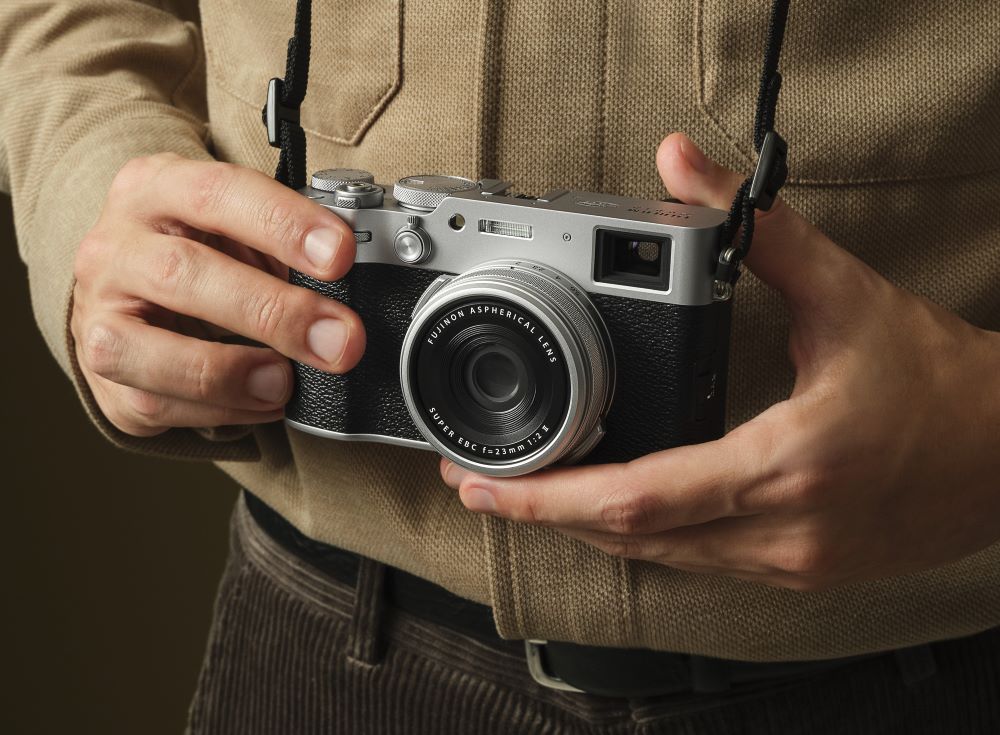
It’s a modern incarnation of the legacy of photography, with its retro design and controls satisfying the craving for that tactile, grounding experience. If photography was all about results then this camera wouldn’t be seeing this meteoric success. The 21st-century photography community understands the joy of photography; something which generative AI will struggle hard to match in the coming years.
Regardless of fears that visual artists may be ‘replaced’ in the future; to make photography truly redundant, you have to dig it up by its roots – the community. With a population of photographers that is growing in size and only becoming more enthusiastic and engaged with the growth of the online world, you’d be tempted to say that’ll be very tricky for anyone – human or otherwise – to achieve.
Conclusion
We hope that you’ve enjoyed reading this feature, and that you’re inspired to go forth and find out more about the technology that’s shaping photography and our wider world.
Park Cameras has remained one of the UK’s primary providers of photographic equipment and expert advice since 1971, through no shortage of technological change. Feel free to explore our leading range of digital cameras, lenses and more today, and discover our exclusive set of photography offers while they last!
Share this post:
By Thom Pyle on 26/07/2024

Trade in your old equipment
Fast and easy trade in service ensures your old gear is collected efficiently and you are paid quickly! It's very simple to trade in your unwanted photography gear. Just head over to our dedicated Sell or Part Exchange page, fill out the details, and we'll get back to you with an offer for your old gear. Take the cash, or put it towards the cost of your new gear. It's up to you! Find out more
sign up to the newsletter
Keep up to date on the latest photography news, events and offers. Sign up now
